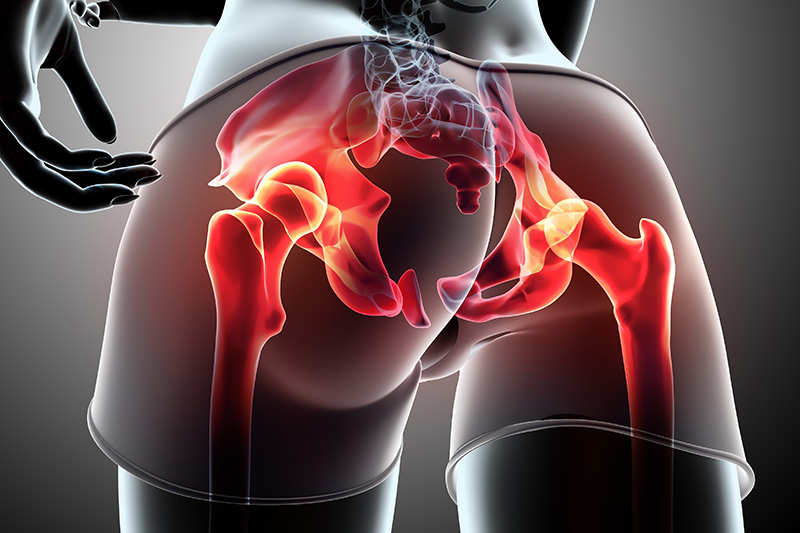
Whether due to degenerative arthritis or injury, the Agency for Healthcare Research and Quality reports that more than 450,000 total hip replacements are performed in the United States every year.[i]
Even though this is major surgery and requires hospitalization and lengthy rehab, many patients who suffer from chronic hip and lower back pain believe they have no other options.
But thanks to the natural healing properties of regenerative medicine, they do.
Why Do My Lower Back and Hips Hurt?
Hip pain can have many causes, including:
- Degenerative osteoarthritis that occurs when cartilage between the bones of the hip joint begins to break down, usually with age.
- Tendon tears and tendinitis. Overuse may result in a tear or inflammation in the tendons, the thick bands of tissue that attach the hip bones to neighboring muscles.
- Muscle or tendon strains are often the result of repetitive motions that stretch the muscles, tendons, and ligaments that support the hips.
- Hip labral tear. The labrum is a ring of cartilage that covers the outside rim of the hip socket. It cushions the joint and helps hold the femur (thighbone) ball within your hip socket. Anyone who makes repetitive twisting movements of the hip joint can develop labral tears.
- Carrying extra pounds puts tremendous pressure on the hips and can significantly hasten joint degeneration.
In some cases, congenital abnormalities may also cause hip pain, as can previous surgery or trauma.
Hip degeneration or tissue damage can result in pain, tenderness, “clicking” and reduced range of motion anywhere within the joint, including the front, side or back of the hip.
Using the Body’s Natural Healing Abilities to Treat Pain
For those suffering from chronic hip and lower back pain, regenerative medicine therapies are providing new hope for pain relief without major surgery.
Regenerative medicine uses the natural healing properties in the patient’s own cells to stimulate healing of damaged tissues, reduce inflammation, and in some cases, actually foster the growth of new cells.
There are two types of regenerative medicine therapies used in clinical practice to treat orthopedic conditions, including hip pain.
- Platelet Rich Plasma (PRP): Concentrated solution of platelets derived from the patient’s own blood contain a significant amount of growth factors and proteins that promote tissue regeneration, decrease inflammation and encourage blood vessel formation.
- Cell-Based Therapies: Cells taken from the patient’s own fat tissue (Microfragmented Adipose Tissue) or bone marrow (Bone Marrow Aspiration Concentrate) contain adult stem cells that have the unique ability to renew themselves and develop into other cell types. They promote tissue healing, control inflammation and fight infection.
How are Cell-based Procedures Performed?
Regenerative treatments are injection procedures. Blood, bone marrow or fat tissue is collected, processed and injected into injured tissue on the same day. These procedures are typically performed on an out-patient basis and recovery begins at home within hours of the treatment. There are no large incisions, no lengthy hospitalizations or rehab stays involved.
Most hip tendon injuries and osteoarthritis respond well to these orthobiologic treatments. Factors such as the degree of injury or degeneration, as well as the patient’s overall health, can impact the final outcomes, but for patients weighing invasive surgery, orthobiologics can provide pain relief and healing without surgery.
To learn more about this treatment and how the team at Nashville Regenerative can help, fill out the form below:
[gravityform id=4 title=false description=false]

